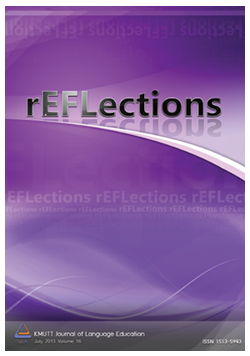Restarts: Symptom or Signal?
Main Article Content
Abstract
Hesitation phenomena are common in spontaneous speech and have been viewed either as a symptom of production difficulties or as a signal to aid listener comprehension. Focusing on simple restarts (i.e. repetitions) and complex restarts (i.e. false starts), this paper examines these in a corpus of naturally occurring conversation for length of restart, association with other hesitation phenomena, position in discourse, content, and complexity (grammatical weight, association with given or new information, and frequency of use of succeeding words). The findings show that restarts are associated with new information and words with low frequencies of use, but rarely occur at the start of T-units and do not differ from non-restarts in grammatical weight. Simple and complex restarts differ in length and in parts of speech either repeated or rephrased. The findings have implications for measuring fluency and for how restarts should be viewed.


